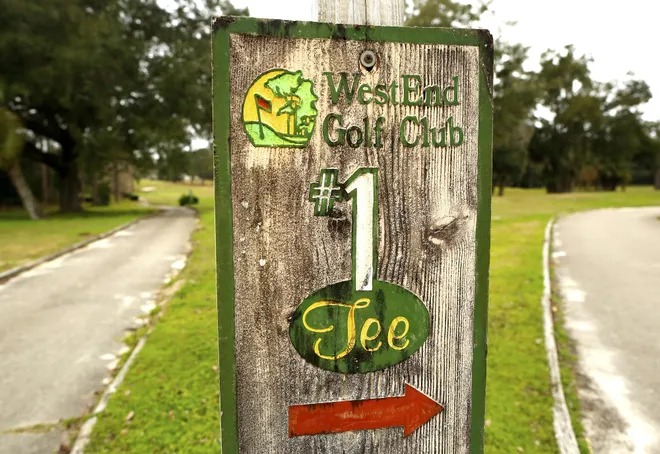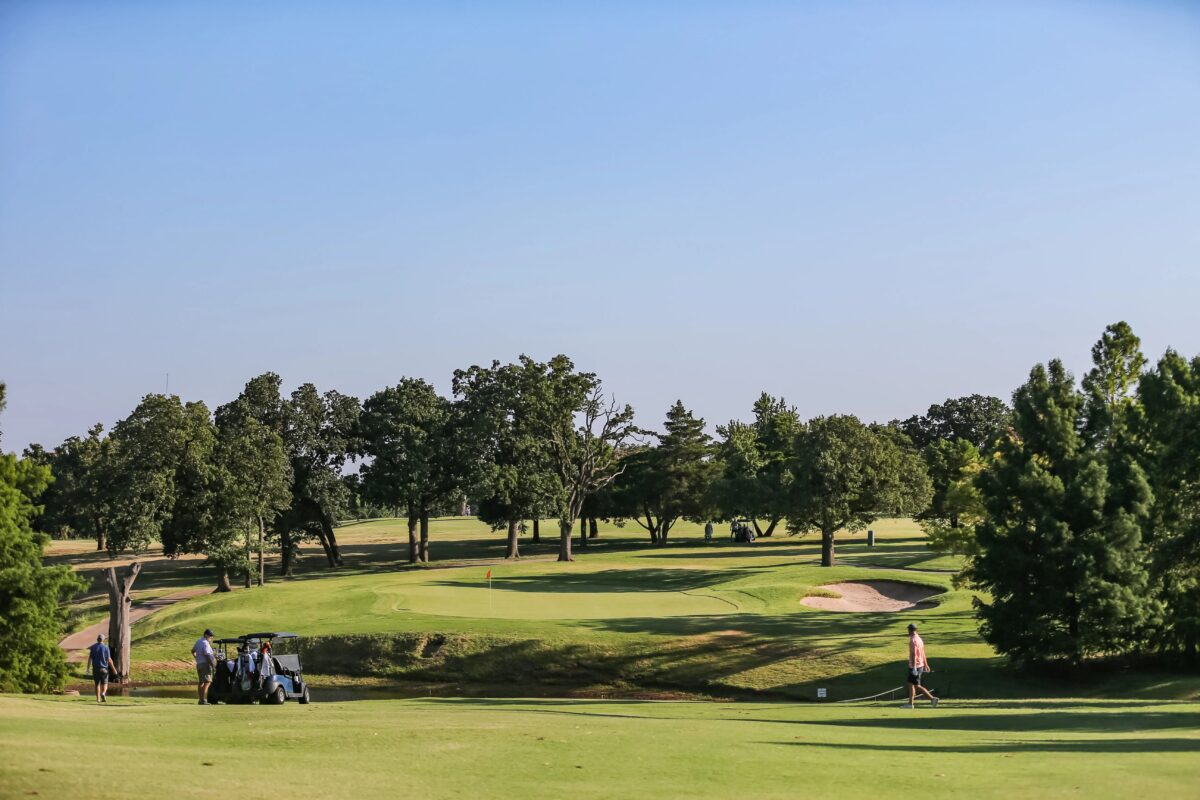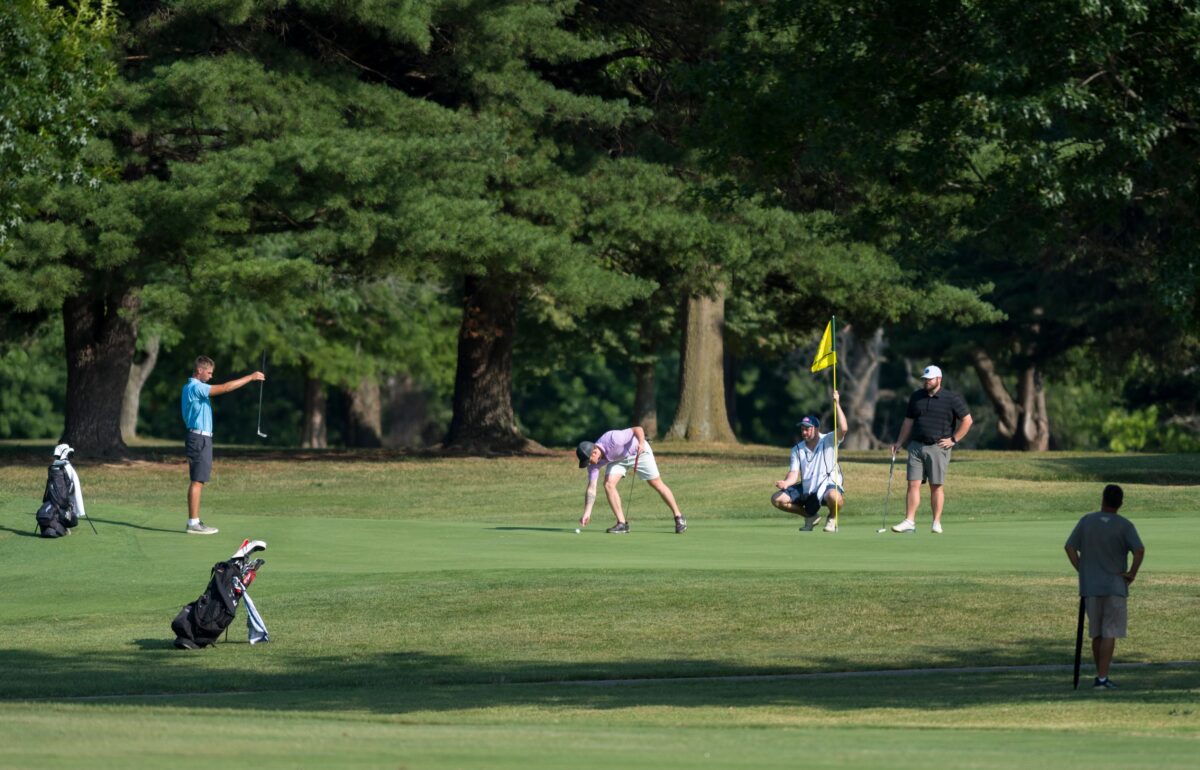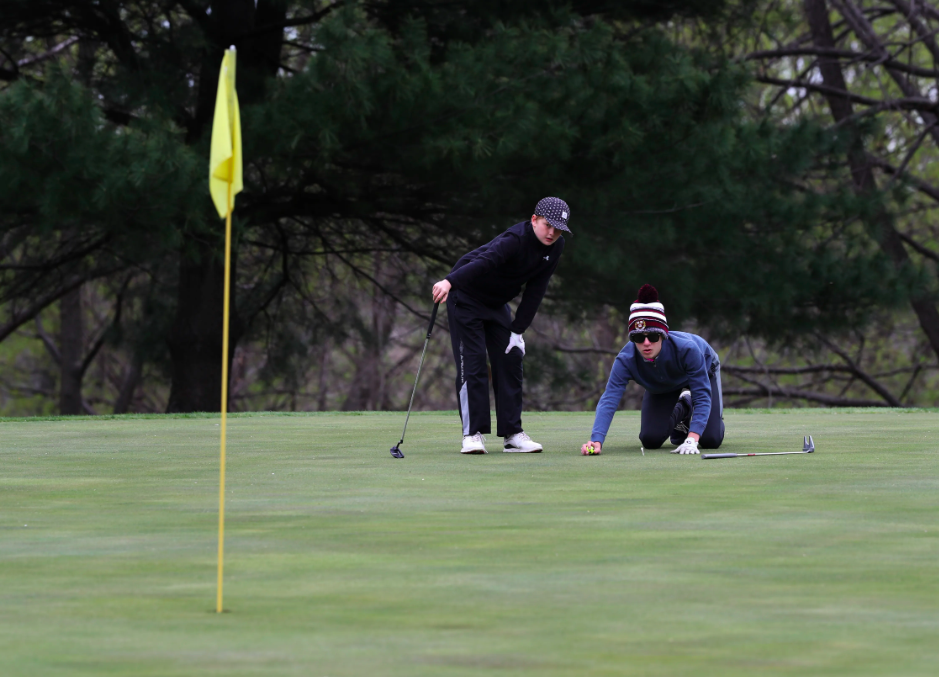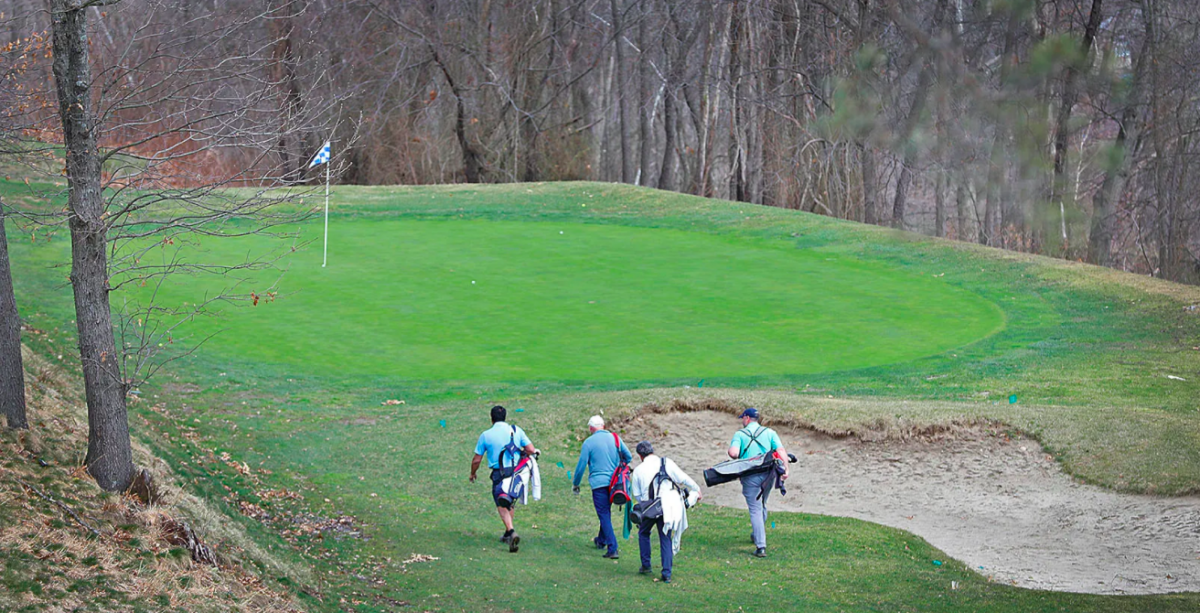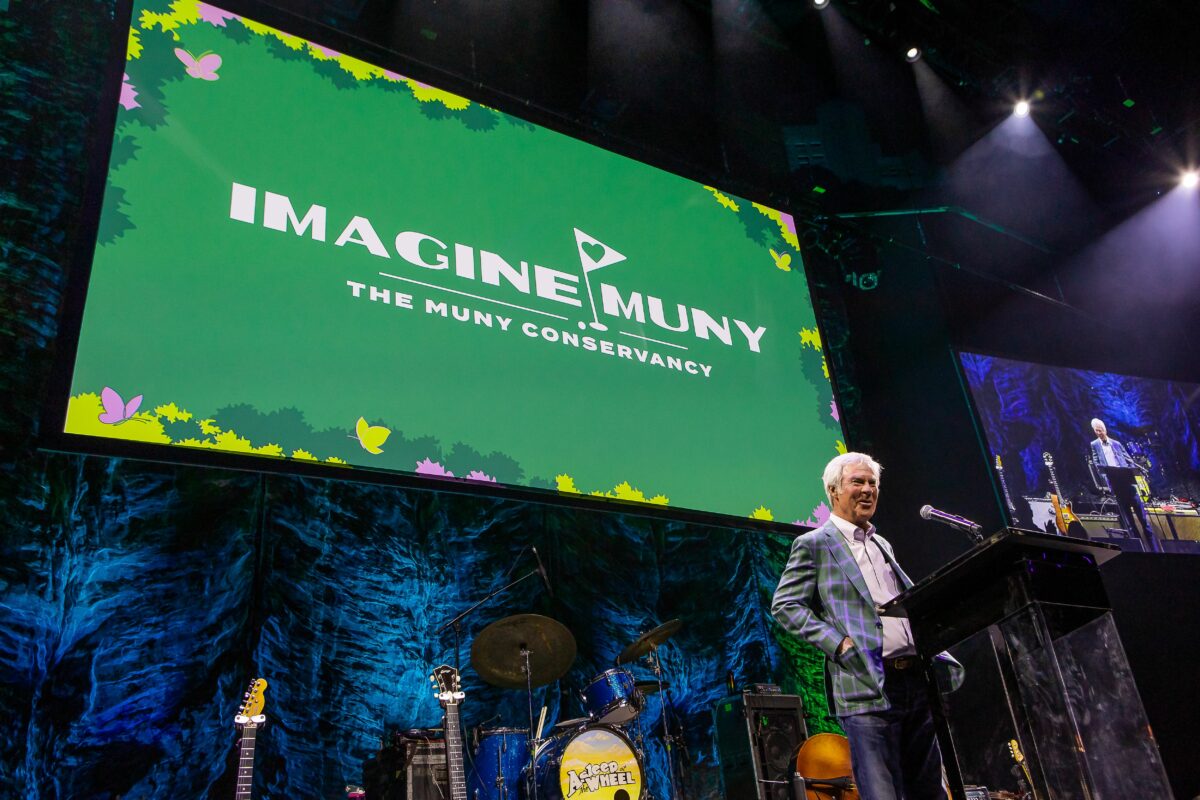GAINESVILLE, Florida — Locals packed an Alachua County meeting room Tuesday night as county commissioners rejected a residential development proposed in place of the now-defunct West End Golf Club.
The Alachua County Commission voted 4-1, with Commissioner Raemi Eagle-Glenn dissenting, to deny a developer’s proposal to change the land-use designation for the site to low-density residential from recreational. A 70-home residential development called Tara Club was proposed for the property, located at 12830 W. Newberry Road across the street from the Tioga Town Center in the Jonesville-Newberry area.
West End Golf Course was the brainchild of Sid and Howard Hodor, a father-son team who opened up nine holes in 1969, patterning the layout after Colonial Palms in Miami.
The course, which had been a fixture in the golf community, closed its doors in December of 2019. The par-60, lighted course has been for sale for more than a year, but finally closed as it became unplayable.
The course included lights — attached to palm trees when it first opened — for play at night. Once the first nine was open, they began working in a second nine.
Residents “are not saying to us they object to development, they’re saying that our comp plan has laid out where that development should be,” said Commissioner Ken Cornell. “And more importantly, we need to have recreational green space to absorb not only the new development, but existing development.”
The proposal’s applicant, JBrown Professional Group, requested to change 38 of 75 unkept acres of the West End property from recreational to low-density residential. The plan also included 37 acres of recreational land that would be dedicated to Alachua County as a park and 10 acres of green space around existing homes.
Commissioners on Tuesday decided whether to transmit major land use amendments to the Florida Department of Economic Opportunity — the agency responsible for signing off on comprehensive plan changes.
Thirty-one residents spoke during the hearing, including 10 represented by planner and former city commissioner Thomas Hawkins.
All were opposed to the plan except for one, who said that denying the bid will continue to make homes in Gainesville less affordable.
“If my children and grandchildren want to live in the same town I live in, I think they won’t be able to afford it because there is just too limited of a (housing) supply in this town,” said Jacob Yin, a homeowner in the Arbor Greens neighborhood.
More green space needed
Others argued, however, that there are already enough residential developments around the area but not nearly enough recreational spaces.
If the West End property is “rezoned to residential, where else in the Jonesville area could the county find an equivalent land already zoned recreational for a highly accessible, highly utilized green space and nature park that would surely bolster the people’s health and wellbeing?” said University of Florida professor emeritus Charles Guy.
For nearly three years, developer JBrown and Sayed Moukhtara have hosted neighborhood workshops and gone over various revisions of the project to meet the public’s concerns to no avail.
“The truth is, we couldn’t reach an agreement with these folks, and I can assure you that we tried,” said Jay Brown, project manager and president of JBrown, during a planning commission meeting earlier this year. “We have worked through dozens and dozens of designs.”
In April, the Alachua County Planning Commission unanimously shot down the proposed development after nearly five hours of deliberations, mostly because the plan wasn’t “dense” enough and should have included more workforce and affordable housing.
At one point, a sprawling mixed-use development was proposed with homes, a hotel and stores. That later shifted to a 129-home development — with an option to put in up to 140 homes — along with donating around 36 acres of the property to create the third-largest green space park in Alachua County.
Tuesday’s plan called for just 70 homes to be built across only 38 of the 75 acres of West End Golf Club’s property, which has been unmaintained since closing in 2019.
Another concern expressed by citizens and the commission included increased traffic, though Brown claimed that the project would produce less traffic than what had been happening when the golf course was open.
“That’s another thing I don’t you’re going to find very often, that when someone brings a development in front of you and suggest that this new development is going to have less traffic, because traffic is always one of the biggest things folks complain about,” Brown said.
Commissioner Anna Prizzia, however, was skeptical of Brown’s claim.
“You’re proposing a park that would be the third-largest in the county (beyond the development). I’m assuming there would be a massive amount of trips to a large park,” she said. “Wouldn’t the trips to that park also have to be included in this conceptual plan in terms of a transportation study?”
Chris Dawson, county transportation planning manager, admitted that staff had not analyzed the application for the amount of traffic the proposal would bring, but later said that regardless of what became of the property, it would increase the number of cars on Newberry Road.
Commissioner Eagle-Glenn, who supported the project, said that residents opposed to the plan were gambling with the possibility of the property later becoming a highly dense traditional neighborhood.
“I don’t see this property on a major corridor remaining recreational,” she said. “Mr. Moukhtara has brought to us the opportunity for recreation without having to raise the taxes of the citizens … and I think what we have on the table today is something that we may never have again.”
Though residents insisted on the importance of keeping the West End property recreational, Moukhtara said they could easily be prohibited from enjoying the property at all.
“This is a private property with its own rights,” he said. “(The owner) can fence this property where only the birds can get in there. So, what I’m doing is carving a part of it … to be open for everyone to benefit and make good use of it.”
To help allay residents, the developer proposed to develop only the inner part of the property while keeping the outer portion recreational, allowing for existing neighborhoods to keep green spaces adjacent to their homes.
This was not enough, however, to prevent the commission from voting down the project, sending Brown and Moukhtara back to the drawing board.
“I have to say I know how much you’ve spent, and I know how much you’ve worked on this, and it’s unfortunate that even after all that time, there was inability to really hear what the community was saying to you,” Prizzia said.
Editor’s note: Reporting from former Gainesville Sun columnist Pat Dooley was also used in this post. Javon L. Harris is a local government and social justice reporter for The Gainesville Sun. He can be reached by phone at (352) 338-3103, by email at jlharris@gannett.com or on Twitter @JavonLHarris_JD.
[listicle id=778280741]
[mm-video type=playlist id=01es6rjnsp3c84zkm6 player_id=none image=https://golfweek.usatoday.com/wp-content/plugins/mm-video/images/playlist-icon.png]
